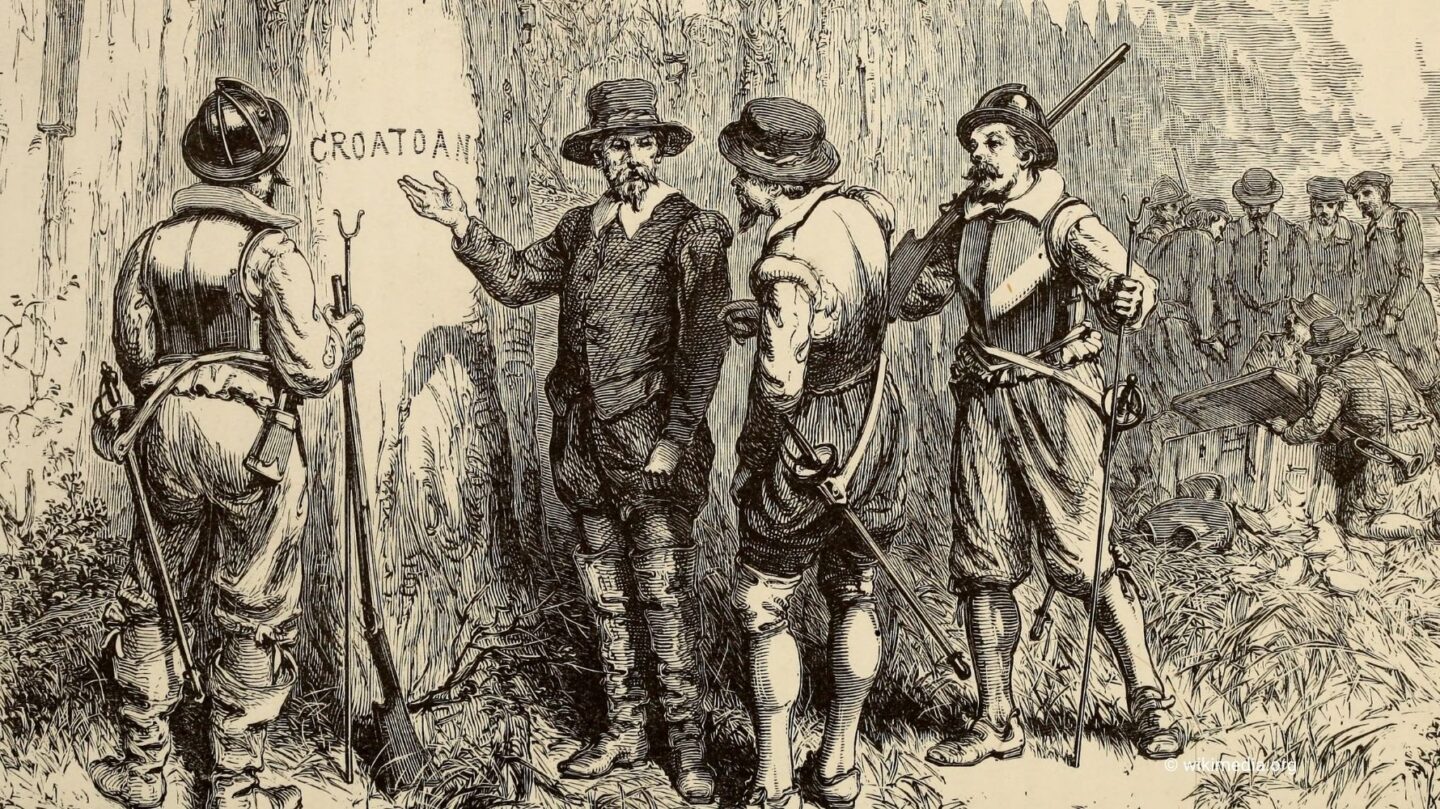The Birth of America’s First Colony
In 1587, a group of 115 English settlers led by Governor John White landed on Roanoke Island, off the coast of present-day North Carolina. Sponsored by Sir Walter Raleigh, the colony was England’s first attempt at establishing a permanent settlement in the New World. The settlers, including men, women, and children, were full of hope, eager to create a new life in an unfamiliar land.
However, the colony faced immediate challenges. Harsh conditions, limited supplies, and tense relations with the local Native American tribes made survival difficult. In a desperate attempt to secure resources, Governor White sailed back to England later that year, leaving behind his daughter, granddaughter, and the rest of the settlers. This decision would set the stage for one of the greatest mysteries in American history.
The Colony Vanishes
When John White returned to Roanoke in 1590, after three years delayed by England’s war with Spain, he found the colony completely deserted. The settlement was eerily empty, with no sign of struggle or battle. The only clue left behind was the word “CROATOAN” carved into a wooden post and the letters “CRO” etched into a tree. The houses had been dismantled rather than destroyed, suggesting an organized departure.
White interpreted the “CROATOAN” carving as a reference to Croatoan Island (now Hatteras Island), located about 50 miles south of Roanoke. However, due to bad weather and limited resources, White was unable to search for the settlers, leaving their fate unknown.
Theories About the Disappearance
Over the centuries, historians and archaeologists have proposed various theories to explain the disappearance of the Roanoke settlers. Some of the most compelling ideas include:
- Integration with Native Tribes: One theory suggests that the settlers joined local Native American tribes, such as the Croatoan or the Powhatan, to survive. Some accounts from later English colonists mention Native Americans with European features, lending credence to this idea.
- Starvation or Disease: The harsh environment and lack of resources may have led to starvation or disease, wiping out the colony. This theory is supported by the settlers’ known struggles to grow crops and secure food.
- Massacre by Native Tribes: Some historians believe that hostile relations with neighboring tribes may have resulted in the settlers being attacked and killed. However, the lack of evidence of violence at the site complicates this theory.
- Relocation and Death: Another possibility is that the settlers attempted to relocate to a more hospitable area, such as Croatoan Island, but perished during the journey or shortly after arrival.
- Supernatural or Unexplained Causes: The mystery of Roanoke has also inspired supernatural theories, including alien abductions and curses, though these remain in the realm of speculation and fiction.
Modern Investigations
Recent archaeological efforts have shed new light on the Roanoke mystery. Artifacts such as European pottery and tools have been discovered on nearby islands, suggesting that some settlers may have relocated and integrated with Native tribes. Advanced DNA testing and ground-penetrating radar continue to be used in the search for more clues.
In 2020, researchers found evidence of a potential settlement on Hatteras Island, supporting the idea that the settlers may have moved south. However, definitive answers remain elusive.
An Enduring Mystery
The disappearance of the Roanoke Colony remains one of America’s oldest unsolved mysteries. While many plausible theories exist, none have been conclusively proven. The story of Roanoke continues to capture imaginations, symbolizing the challenges and uncertainties faced by early colonists. It serves as a haunting reminder of the fragile line between survival and extinction in the unforgiving wilderness of the New World.
